14
Newspaper Advertisement for Oliver-Osoyoos Co-op Growers' Association20th Century, Circa 1981
Oliver, British Columbia, Canada
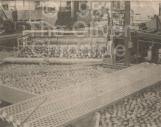 Credits:
Credits:The Oliver Chronicle
15
Before canneries dotted the Okanagan, fruit that could not be sold was dumped or used for compost. Louis Deighton opened canneries in the Okanagan as a way to profit from unwanted fruit and fruit that was not sold within season. Deighton canneries implemented a method of clarification and pasteurization of apple juice that gave the juice a more appealing appearance.16
East side of Deighton Canneries20th Century, Circa 1940's
Oliver, British Columbia, Canada
 Credits:
Credits:Deighton, Louis
17
Recognizing its growing popularity and sticking to its regine of centralization, The BC Fruit Growers' Association arranged a deal with Deighton canneries to incorporate their canneries into a company. Sun-Rype, formed on May 13 1946, remains as Western Canada's largest producer of fruit products and juices.18
Juice Filter at Cannery20th Century, Circa 1940's
Oliver, British Columbia, Canada
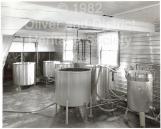 Credits:
Credits:C. Scott Photography
19
The first school in the area, Oliver Elementary School, was built in 1929. Having four rooms, it was considered 'the ideal school' by the District Inspector. From 1931 to 1932, 159 students were taught at the school.The building was demolished in 1990 to make room for a more modern building with greater student capacity.
20
First Oliver Elementary School, built in 192920th Century, Circa 1929
Oliver, British Columbia, Canada
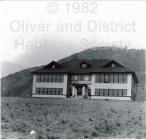 Credits:
Credits:Mrs. Mabee, George
21
The old elementary school built in 1929 did not have the capacity to accomodate the town's growing population. In response, another elementary school was built in 1941. The two operated simultaneously for a time, with the newer building having upgrades built on to it in 1964.22
Second Oliver Elementary School, opened in 194120th Century, August 1986
Oliver, British Columbia, Canada
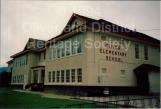 Credits:
Credits:Cranston, Dot
23
Despite the agricultural difficulties that Okanagan farmers were experiencing, the town of Oliver continued to grow, and its size eventually warranted the construction of a full-size secondary school. Frank Venables, chairman of the board in the 1940s, played an active role in education in the Oliver area and ultimately throughout BC. In 1970, the auditorium was named after him in recognition for his dedication.24
School board members upon opening of SOSS20th Century, Circa 1941
Oliver, British Columbia, Canada
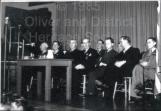 Credits:
Credits:The Frank Venables Collection
25
At the time of its construction, Southern Okanagan Secondary School (then called Southern Okanagan High School) was a benchmark of architectural and technological achievement. Designed for a capacity of 800 students, and equipped with a theatre hall and gymnasium, the building was state-of-the-art, and considered one of the finest secondary schools in British Columbia.26
Southern Okanagan Secondary School shortly after opening20th Centiry, Circa 1941
Oliver, British Columbia, Canada
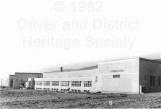 Credits:
Credits:Kelowna Museum
27
The Oliver sawmill was a long-standing and important component of the town's economy. Bought by Harry Fairweather from the government in 1925, the mill originally operated to help construct important buildings, as well as lumber for the canal project. It was moved to south-western Oliver, presently the site of Oliver's major industrial centres. Shortly after being moved, the mill assumed operations with logging companies as far as the Kettle Valley. Diversifying its income, Fairweather invested in crate-building technologies, shipping around 1,250,000 boxes anually, and even more to be used as ammunition crates during World War II.The Fairweather Lumber Company's saw and plane mills logging, processing, and manufacturing jobs employed 106 people in 1955, as well as seasonal workers building boxes. The mill closed its doors and was dimantled in 1967